Aboriginal Territories in Cyberspace wishes you a magical holiday season ✿❤❄✳
by Dion Smith-Dokkie
December 21, 2018
What a year!
Aboriginal Territories in Cyberspace sends you our warmest wishes this holiday season. Both in the studio and out in the world, 2018 was a phenomenal year for us! We wanted to take a moment to share some of our accomplishments and activities with you.

The new year began with AbTeC co-founder Jason Edward Lewis offering a brand new course, a graduate seminar on the Future Imaginary, in which students thought about what Indigenous life would look like in the future and the implications of this question. Students produced research papers and creative projects to articulate their own future imaginaries. Undergraduate research assistant Dion Smith-Dokkie’s contribution to our Illustrating the Future Imaginary series, Figure 4. Exclusion Zone Radioactivity, developed from this course.
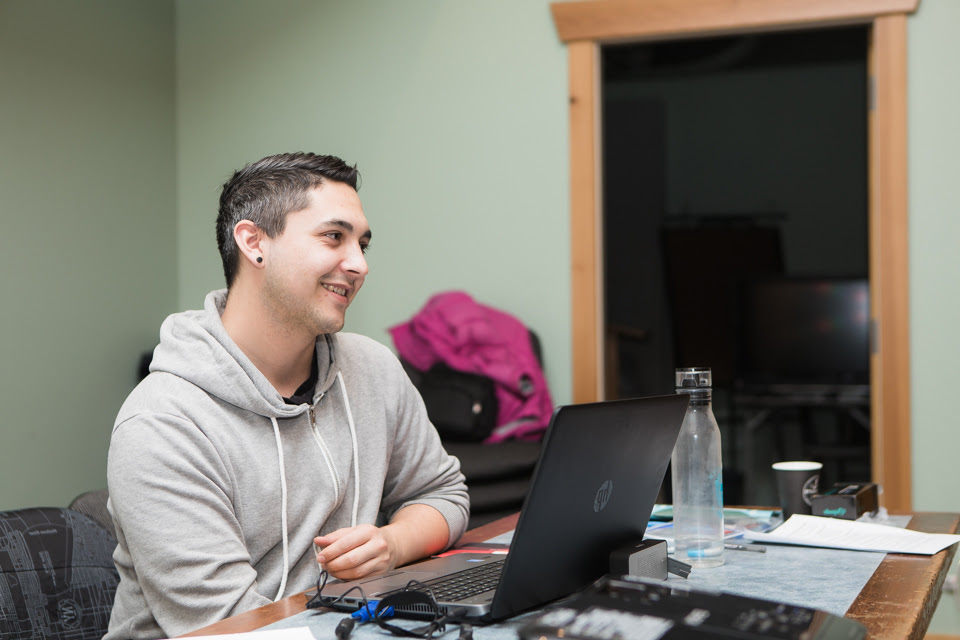
In February, graduate RA Maize Longboat and co-founder Skawennati gave two workshops at the Good Hearts, Good Minds conference in Maple Ridge, British Columbia, showing over 30 Indigenous youth how to tell traditional stories in digital media and introducing them to the basics of Second Life. Skarù:re’ Awekwehstá:θe:’ founder Mia McKie and graduate research assistant Waylon Wilson joined in to help. Back in the studio, we were paid a visit by students from OCADU’s Indigenous Visual Cultureprogram, who came to learn about our research and ongoing projects. Through this, we reconnected with Illustrating the Future Imaginary contributor Kaia’tanó:ron Dumoulin Bush. Kaia’tanó:ron joined us as an RA over the summer, offering her expertise in digital painting and design.
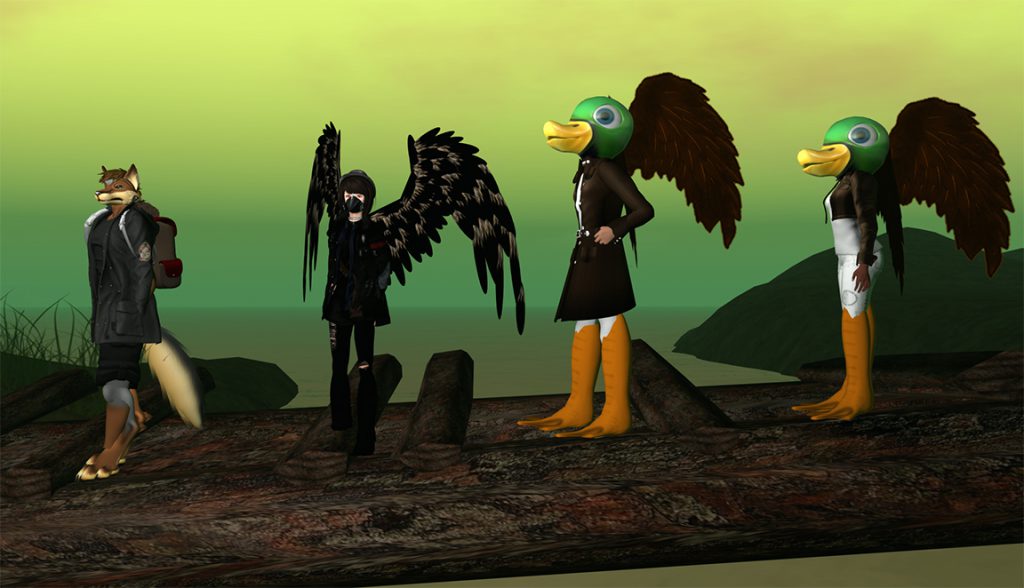
AbTeC and IIF hosted a number of other workshops this year too! In April, Maize and Skawennati, this time with Producer Nancy Townsend, went to Saskatchewan to give a machinima workshop at the Regina Public Library in partnership with the MacKenzie Art Gallery. Over the course of the week, participants created a short machinima based on a Nehiyȃw (Cree) story: How the Loon Got Its Walk. Find Maize’s account of the workshop here.
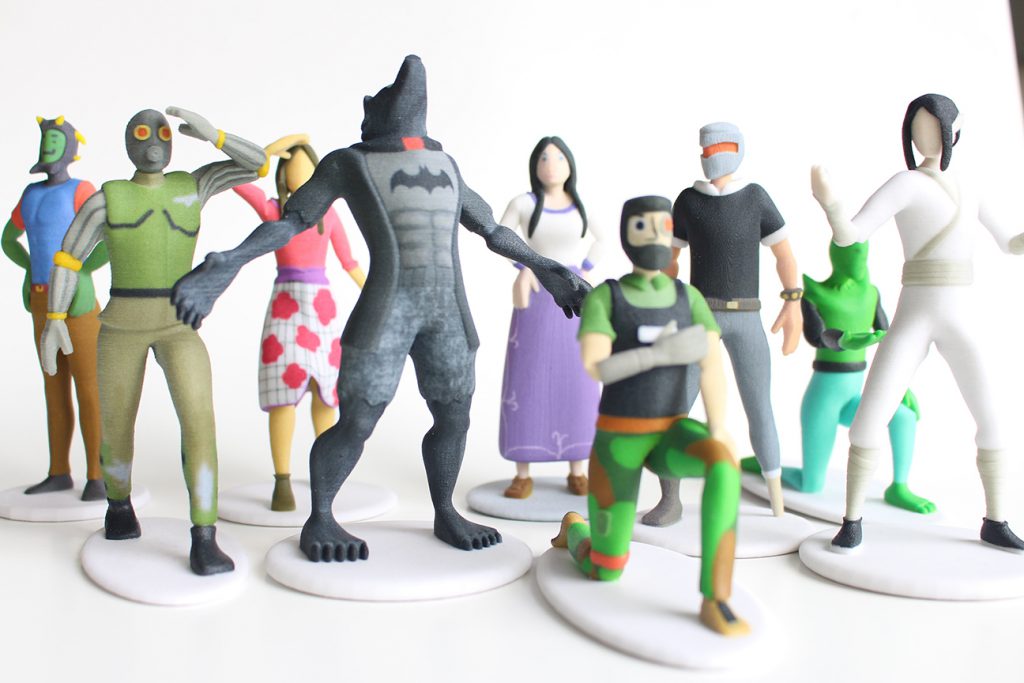
From March to May, AbTeC and IIF collaborated with the Kahnawake Survival School to offer an in-depth version of our 7th Generation Character Design Workshop. In this five-week workshop, our team worked with high school students to help them imagine a descendant or community member at least seven generations in the future. Working with paper and pen, participants sketched their designs under the guidance of Jason Edward Lewis and Skawennati. Following this, undergraduate RAs Raymond Tqoqweg Caplin and Kahentawaks Tiewishaw gave lessons in 3D modelling, UV unwrapping and skin creation. Participants then created their own characters. Our lessons were punctuated by a visit from industry professionals Dominick Meissner and Vivian Herzog of Behaviour Interactive. We concluded the workshop with an in-community exhibition of 3D printed versions of the participants’ digital models! In one of our prototype Seventh Generation Character Design Workshops, graduate RA Suzanne Kite (aka Kite) developed the concept for her performance artwork Listener. An image from this piece, entitled L-Sys (Lakȟóta System), was added to the Illustrating the Future Imaginary series.
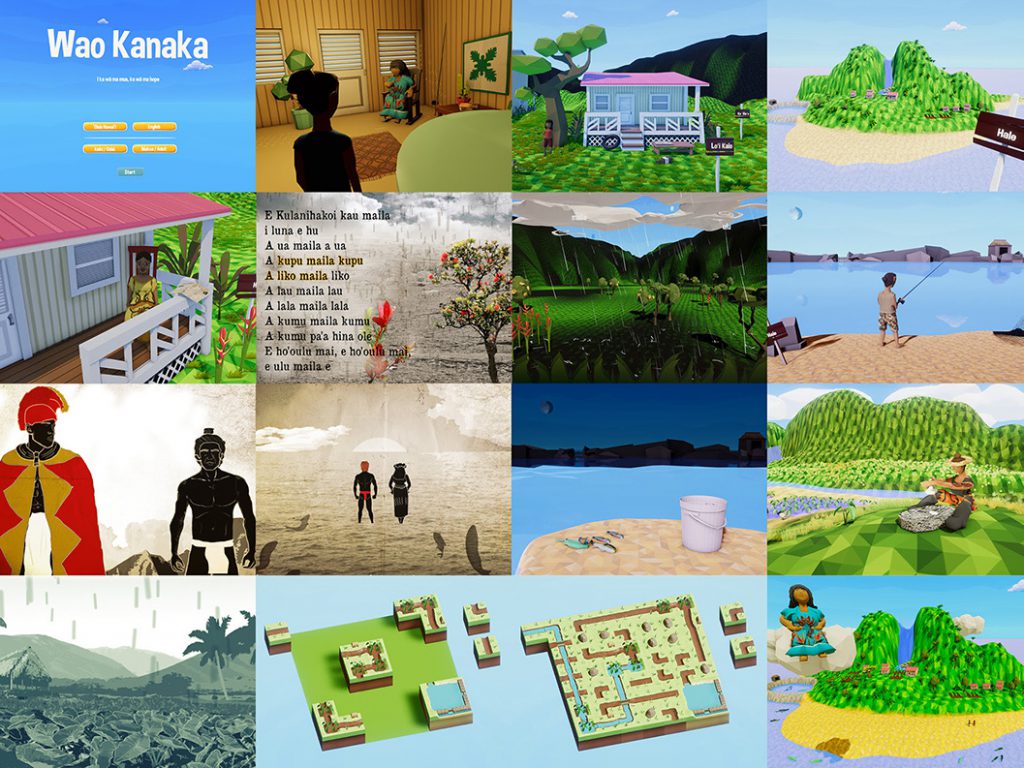
In July, IIF collaborated with Kanaeokana and Kamehameha Schools to facilitate He Au Hou 2, the sixth version of our Skins Workshops on Aboriginal Storytelling and Video Game Design. Taking place in Honolulu, Hawai‘i, our team of seasoned pros and bright newbies worked with a marvellous cohort—who named themselves Ka Lei Milikaʻa—to transmediate Kanaka Maoli stories and knowledge into a video game format. A number of research assistants acted as facilitators and instructors—you can check out the test game they created in preparation for the workshop here. After three weeks of intense learning (and laughter), the cohort created Wao Kanaka, I ka Wā Mamua, i ka Wā Mahope. You can download the game for free at the Skins 6.0 website, as well as our curriculum, blog, documentation and participant bios.

Both AbTeC and undergraduate RA Lucas LaRochelle an Honourable Mention in the Digital Communities category of the Ars Electronica Festival! Additionally, Kite took part in the Hexagram Network’s Campus Ars Electronica group exhibition, Taking Care, with three performances of her iterative, multimedia performance artwork, Listener. Research assistant Sam Bourgault collaborated on Design and Computation Arts Masters student Augustina Isidori’s SOLA as the Unity Developer.
In 2017, the Milieux Institute for Arts, Culture and Technology introduced its Undergraduate Fellowship Program. Through this program, Milieux’s eight clusters nominate students to conduct personal research and contribute to its community. RA Dion Smith-Dokkie was our Fellow in the 2017-18 year. Currently, undergraduate research assistants Kahentawaks Tiewishaw and Rudi Aker are our Milieux Undergraduate Fellows.

The studio was abuzz with anticipation for the 19th edition of the imagineNATIVE Film + Media Arts Festival in Toronto, Ontario! AbTeC and our affiliates submitted four works. For our part, AbTeC and the Skins 5.0 cohort, Nā ‘Anae Mahiki, submitted He Ao Hou, the video game made during the Skins 5.0 Workshop, our first in Honolulu, Hawai‘i. Skawennati submitted her sci-fi machinima retelling of the Haudenosaunee confederation story, The Peacemaker Returns. Our research assistants were in on the action too! RA Waylon Wilson, along with his collaborator Mia McKie, exhibited their game, Nu:ya! Nu:ya! A Tuscarora Exploratory Game. And, RA Travis Mercredi’s virtual-reality walking sim, ~2700, was also featured in this year’s festival!
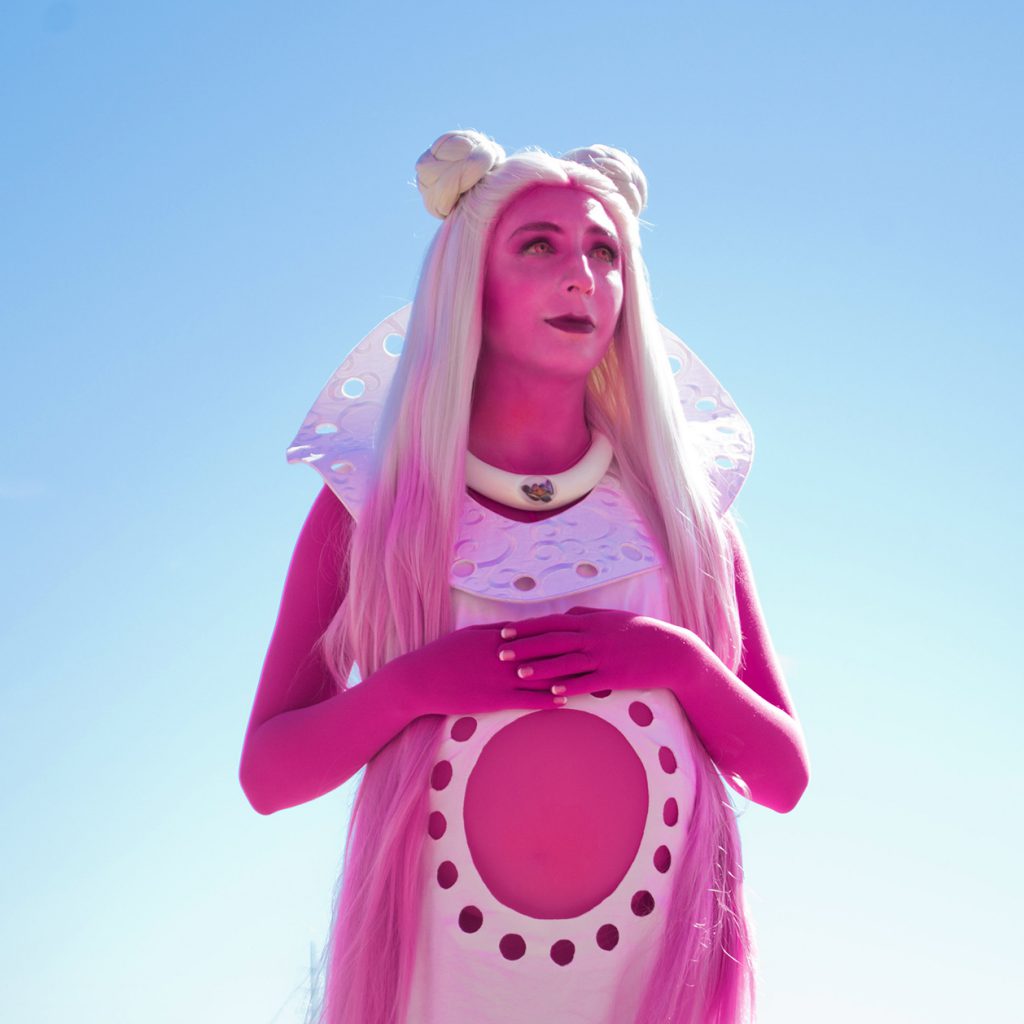
In November, a bunch of us attended the Indigenous Comic Con—we had a blast! Jason Edward Lewis, Nancy Townsend, Suzanne Kite, Maize Longboat, Ray Tqoqweg Caplin, Valerie Bourdon and Kahentawaks Tiewishaw all flew to Albuquerque, New Mexico for the three-day event. We connected with fellow Indigi-nerds and met cool artists! We even took part in the Cosplay Contest. An AbTeC team put together a beautiful costume which Kahentawaks wore, playing Otsitsakaion from Skawennati’s She Falls For Ages!
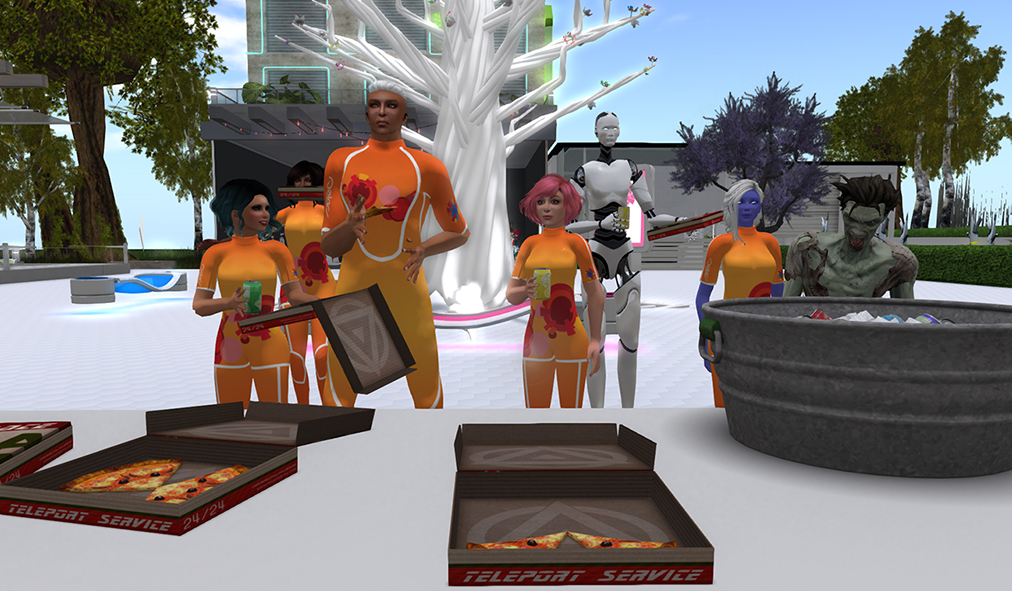
All year long, at our virtual headquarters, AbTeC Island, we have been researching what it means to create Indigenously determined cyberspaces—and what it means to be Indigenous online. A number of guests have come to our weekly visiting hours to explore and talk about Indigeneity, virtual worlds and the future. In October, we hosted a Halloween party, and just last week, a Winter Solstice Wonderland party to bring virtual and real-world guests into our little slice of virtual paradise. The project has appeared on platforms like Canadaland’s The IMPOSTER and CBC Unreserved with Rosanna Deerchild.
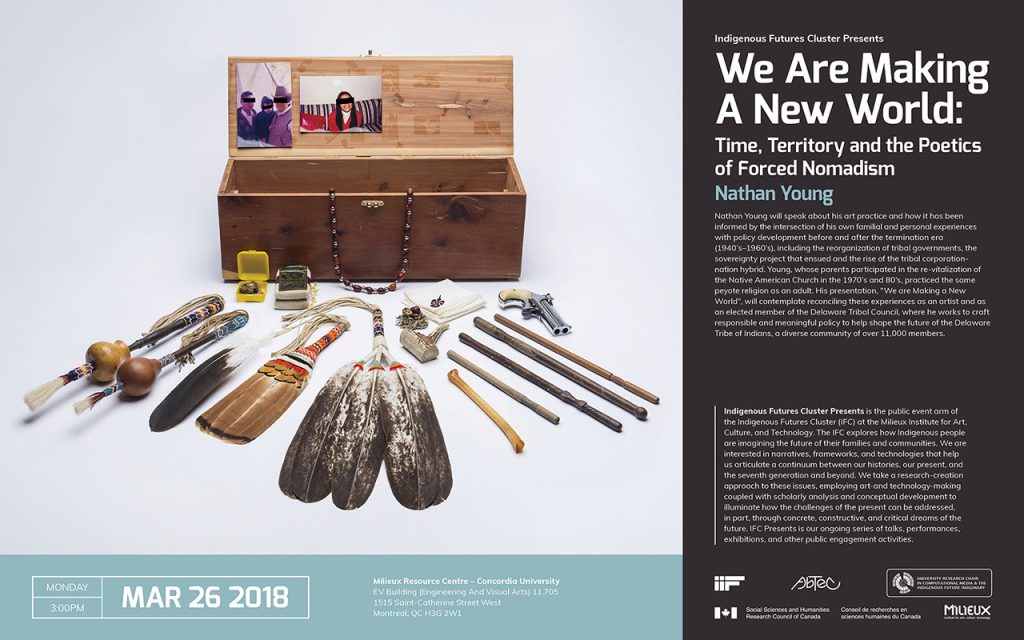
The studio has been bustling with residents and special guests over the past 12 months! Artist-in-residence Scott Benesiinaabandan has been working on a variety of projects over the year; his virtual-reality artwork, Blueberry Pie Under a Martian Sky, toured Canada with the 2167 project. We have also welcomed a host of guests for briefer stays. Lenape-Kiowa artist and IIF artist-in-residence Nathan Young collaborated with Suzanne Kite on a site-specific digital listening artwork. He also gave an artist’s talk, and was interviewed for our Future Imaginary Dialogues series. Filmmaker Adam Khalil and MIT Arts, Culture and Technology Masters student Erin Genia also visited us in studio! During the summer, Achimostawinan Games joined us to create a prototype version of their forthcoming, Indigenous Cybernoir video game, PURITY & decay. Meagan Byrne, Tara Miller, Travis Mercredi, Colin Lloyd and Gabriela Kim Passos were in the studio in various capacities in May and June, pushing the project forward with the support of our team. Finally, Anishinaabe comedian, writer, media maker and community activator Ryan McMahon gave an Indigenous Futures Cluster Presents public talk where he shared experiences gained through his podcast, Red Man Laughing.
This is just a sampling of our projects throughout 2018. If you would like to see a full overview of our activities in 2018 and years previous, click here to access our IIF Partnership Activity Interactive Timeline.
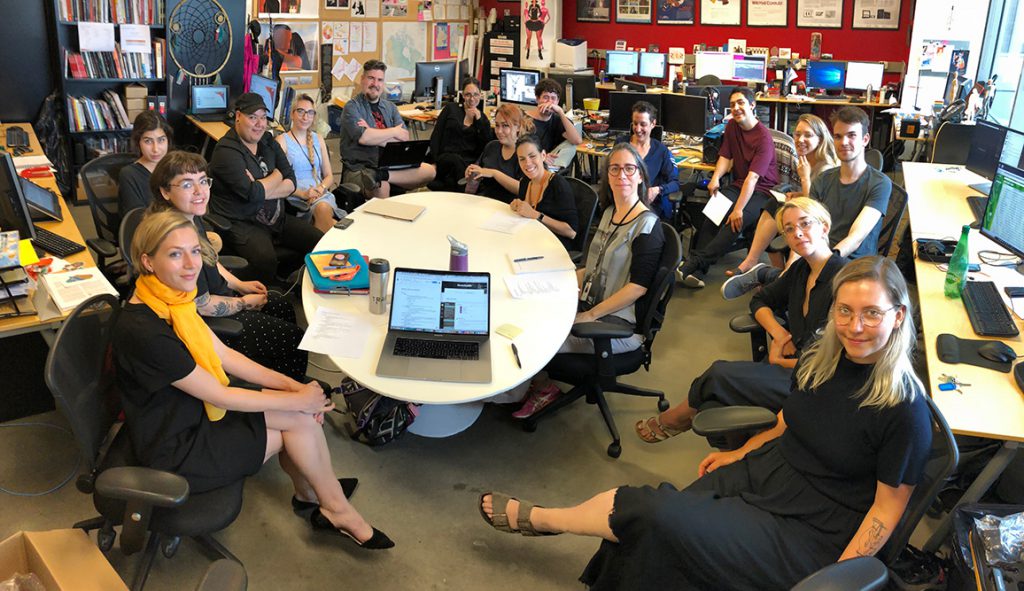
As you can see, 2018 was a magical and hectic year! Aboriginal Territories in Cyberspace looks forward to some regenerative rest and to a fruitful 2019. We thank you for your continuing support and interest in our mission and wish you the happiest of holiday seasons and a wonderful New Year!
Warmly,
Aboriginal Territories in Cyberspace

